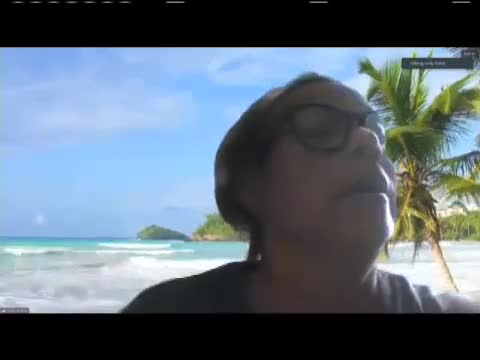Community rallies against controversial land rezoning bills
July 10, 2024 | Hawaii County, Hawaii

This article was created by AI summarizing key points discussed. AI makes mistakes, so for full details and context, please refer to the video of the full meeting. Please report any errors so we can fix them. Report an error »

During a recent government meeting, significant concerns were raised regarding Bill 166 and Bill 169, both of which propose amendments affecting the North Kona district.
Opponents of Bill 166 expressed strong objections, citing potential negative impacts on endangered species and their habitats, as well as the risk of damaging prehistoric and pre-contact Native Hawaiian properties. Critics highlighted that rezoning could exacerbate flooding and increase traffic in the area, urging decision-makers to proceed cautiously with any changes.
Similarly, Bill 169 faced opposition, particularly regarding its implications for Native Hawaiian gathering and fishing rights. Referencing the Supreme Court's Pash and Kapakai Okaaina decision, speakers emphasized the need to consider cultural, historical, and natural resources tied to traditional sites. They pointed out that the land in question contains significant archaeological features, including rock walls, which are inadequately described in current reports. The Holula Holula Loa slide was specifically mentioned as a vital cultural and archaeological site from pre-Western contact that cannot be replaced if damaged.
Additionally, the meeting underscored the importance of accurately addressing the cultural significance of various sites along the coast, particularly between Kailua and Kehoe. The constitutional rights of Native Hawaiians, as outlined in Article 12, Section 7, were also invoked, stressing that any environmental assessments must thoroughly evaluate the impact on Hawaiian culture and traditional practices.
The discussions reflect a broader concern for preserving cultural heritage and environmental integrity in the face of proposed legislative changes.
Opponents of Bill 166 expressed strong objections, citing potential negative impacts on endangered species and their habitats, as well as the risk of damaging prehistoric and pre-contact Native Hawaiian properties. Critics highlighted that rezoning could exacerbate flooding and increase traffic in the area, urging decision-makers to proceed cautiously with any changes.
Similarly, Bill 169 faced opposition, particularly regarding its implications for Native Hawaiian gathering and fishing rights. Referencing the Supreme Court's Pash and Kapakai Okaaina decision, speakers emphasized the need to consider cultural, historical, and natural resources tied to traditional sites. They pointed out that the land in question contains significant archaeological features, including rock walls, which are inadequately described in current reports. The Holula Holula Loa slide was specifically mentioned as a vital cultural and archaeological site from pre-Western contact that cannot be replaced if damaged.
Additionally, the meeting underscored the importance of accurately addressing the cultural significance of various sites along the coast, particularly between Kailua and Kehoe. The constitutional rights of Native Hawaiians, as outlined in Article 12, Section 7, were also invoked, stressing that any environmental assessments must thoroughly evaluate the impact on Hawaiian culture and traditional practices.
The discussions reflect a broader concern for preserving cultural heritage and environmental integrity in the face of proposed legislative changes.
View full meeting
This article is based on a recent meeting—watch the full video and explore the complete transcript for deeper insights into the discussion.
View full meeting
